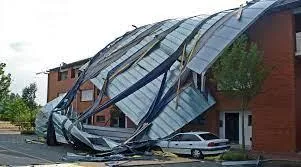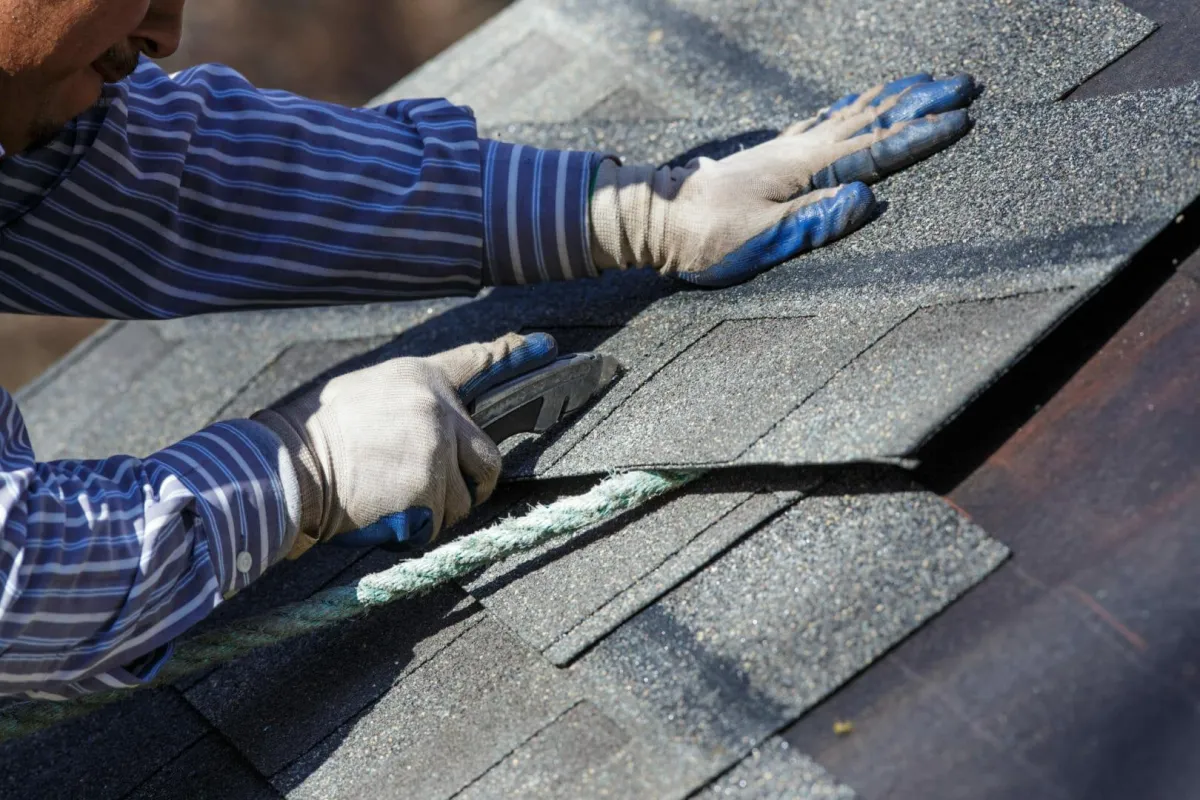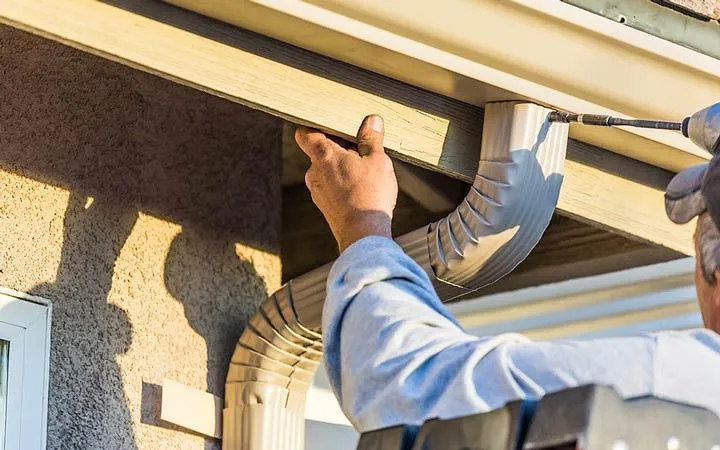Roofing Woes: Navigating the Common Problems and Solutions
When it comes to our homes, we all want them to be safe, comfortable, and functional. One of the most important components of any home is the roof.
Not only does a well-maintained roof protect us from the elements, but it also keeps our homes structurally sound. Unfortunately, many homeowners don't give their roofs the attention they deserve until there's a problem.
Common Roofing Problems You May Face
The Importance of a Well-Maintained Roof
A well-maintained roof is one that is regularly inspected and repaired as needed. This means keeping an eye out for signs of damage or wear and tear, such as missing shingles, cracks in the flashing around chimneys or vents, or leaks in the attic or ceiling inside your home. Regular maintenance can help extend the life of your roof and prevent more costly repairs down the line. Not only does regular maintenance keep your roof in good condition, but it can also help improve energy efficiency. A properly insulated and ventilated roof can help keep your home cooler in the summer and warmer in the winter, which can save you money on your energy bills.
Common Roofing Problems Homeowners Face
No matter how well you maintain your roof, it's inevitable that you'll face some common roofing problems at some point. Some of these problems include:
Roof Leaks: whether it's due to missing shingles or damaged flashing around vents or chimneys, roof leaks are one of the most common roofing problems homeowners face.
Shingle Damage: shingles can become damaged from exposure to harsh weather conditions like wind, rain, snow or hail.
Poor Ventilation: poor ventilation in the attic can cause moisture buildup and damage to your roof.
Ice Dams: ice dams occur when snow melts on the roof and then refreezes at the edge, causing water to back up under shingles.
Rooftop Punctures and Holes: punctures and holes can occur from a variety of reasons, including hail damage, fallen tree branches or foot traffic on the roof.
Tree Damage: overhanging branches or falling trees can cause damage to your roof that needs immediate attention.
In this article, we'll explore each of these common roofing problems in more detail and provide tips for how homeowners can prevent them and fix them when they do occur.
The Causes of Roof Leaks
One of the most common roofing problems that homeowners face is a leaky roof. The causes of a leak can be varied, but some of the most common include damaged or missing shingles, cracked flashing around vents or chimneys, and clogged gutters. Other causes may include faulty installation, poor quality materials, or natural wear and tear. Poor ventilation and excessive moisture can also lead to roof leaks. In warm and humid climates, moisture can accumulate in the attic and cause damage to the roofing system. Additionally, ice dams (discussed in section 4) can form on roofs during winter months which prevents proper water drainage leading to leaking.
Signs of a Leaky RoofIt's essential for homeowners to know how to identify the signs of a leaky roof. Some obvious indicators include water stains on walls or ceilings, peeling paint or wallpaper near the roofline, and visible mold growth. A musty smell in your home could also indicate that you have moisture problems in your attic due to leaks. Another way to spot a leak is by inspecting your roof from the outside. Look for missing shingles or any damage around chimneys and vents. If you notice any warping or buckling in your roof structure, this could also be an indication that there is a leak somewhere within it.
How To Fix A Leaking Roof - Fixing a leaking roof is not something that should be taken lightly as it requires technical expertise and appropriate safety measures taken while being completed. It's always recommended that you hire professionals for such work if you are not skilled enough yourself. The first step towards repairing a leaking roof is identifying where exactly it's coming from so repairs are made at those locations only instead of guessing areas across the whole surface area of the roof. Once identified, the damaged shingles should be removed and replaced with new ones. If flashing is causing the problem, it must be resealed or replaced. In more severe cases, a roof replacement may be necessary to ensure that water will not continue to leak into your home.
Shingle Damage
Shingles are an important component of a roofing system, as they provide protection against various weather conditions. However, they can become damaged over time, which can compromise their effectiveness and lead to further problems. There are different types of shingle damage that homeowners should be aware of to ensure that their roof remains in good condition.
Types of Shingle Damage
The most common types of shingle damage include cracking, curling, blistering, and granule loss. Cracks can occur due to exposure to extreme heat or cold weather conditions. Curling happens when the edges of the shingles lift up and become brittle. Blistering is caused by trapped moisture under the shingles that causes bubbles or small bumps on the surface. Granule loss occurs when the protective layer on the shingle wears off. In addition to these common types of damage, shingles may also experience hail damage or impact damage from falling debris such as branches or tree limbs. Hail can cause dents or cracks in the surface of shingles, while impact damage may cause punctures or tears in the material.
How to Spot Shingle Damage
Homeowners should regularly inspect their roof for signs of shingle damage so they can address any issues before they become more severe. Some signs to look out for include cracked or missing shingles, curled edges, bald spots where granules have worn away, and visible holes or punctures in the material. If you notice any signs of damage during your inspection, it's important to take action right away. Delaying repairs could lead to more extensive and costly problems down the road.
Repairing or Replacing Damaged Shingles
If you find that your roof has damaged shingles, you may be able to repair them rather than replace the entire roof. However, this will depend on the extent of the damage and whether there are other issues affecting the roof's overall integrity. Minor damage, such as a few missing or cracked shingles, can typically be repaired by replacing the damaged pieces. This is a relatively straightforward process that involves removing the damaged shingles and installing new ones in their place. If there is more extensive damage or if your roof is nearing its expected lifespan, it may be time to consider a full replacement. A professional roofing contractor can assess your roof and provide recommendations based on its condition and your budget.
Think About Prevention
The best way to avoid shingle damage is through prevention. Regular maintenance of your roof can help keep it in good condition and prevent problems from arising. This includes cleaning gutters regularly, trimming back overhanging branches that could fall onto the roof during storms or high winds, and inspecting for damage periodically throughout the year. By taking proactive steps to maintain your roof's health, you can avoid costly repairs and ensure that it provides long-lasting protection for your home.
The Importance of Good Ventilation for Your Roof
Good roofing ventilation is essential, as it can help prevent a lot of common roofing problems. In fact, poor ventilation is one of the most common causes of roof issues. When ventilation is inadequate, it can lead to an increase in moisture levels in your attic. This moisture buildup can cause damage to your roof and lead to mold and mildew growth. It's important to understand the effects of poor ventilation on your roof and take steps to improve it.
Effects of Poor Ventilation on the Roof
Poor ventilation can cause a number of problems for your roof. One major issue is that it can cause shingles to deteriorate more quickly, ultimately shortening the lifespan of your roof. Additionally, moisture buildup in your attic from poor ventilation can lead to wood rot and other structural damage. Prolonged exposure to high levels of moisture will eventually weaken the structure of your roof, causing issues with its overall integrity.
Signs of Poor Ventilation in the Attic
There are several signs that may indicate poor ventilation in your attic or roof space. The first thing you might notice is a musty smell coming from your attic. This smell indicates that there might be too much moisture present in the air due to lackluster airflow and inadequate venting. Another sign you should keep an eye out for is condensation buildup on interior surfaces such as walls or ceilings below your attic space level. This buildup typically occurs when warm air meets cooler surfaces such as ductwork or pipes running through tight spaces. If you notice any signs like these, it's time to take action!
Solutions for Improving Ventilation
Fortunately, there are many solutions available for improving ventilation and preventing different kinds of roofing problems related to poor airflow management on roofs! One easy solution may be installing a ridge vent or allowing air to flow through the soffits. Another option is to install an exhaust fan in your attic. This will help remove hot air and moisture from the space, keeping your roof cooler and drier. It's important to consult with a professional roofing contractor if you're unsure about what solutions are best for your home. A knowledgeable professional can evaluate your current ventilation situation and recommend the best course of action for improving airflow management on your roof. By taking steps to improve ventilation, you can prevent a host of common roofing problems and help extend the lifespan of your roof. Don't wait until it's too late—keep an eye out for warning signs, take action, and enjoy peace of mind knowing that your roof is protected!
Ice Dams: The Icy Menace
If you live in a region with heavy snowfall during the winter, you may have come across ice dams on your roof. Ice dams are thick ridges of ice that form at the edge of your roof, and they can cause significant damage to your home's structure and roofing materials.
What are Ice Dams?
Ice dams form when snow accumulates on the roof and then melts due to heat escaping from the attic. The melted snow then flows down the roof until it reaches a colder section, such as the overhangs or gutters, where it refreezes into solid ice. Over time, this process creates thick ridges of ice that can trap water and prevent it from draining off the roof.
How They Form and Their Effects on the Roof
The primary cause of ice dams is poor insulation and ventilation in your attic. When heat escapes from your home into the attic, it warms up the underside of your roof, causing snow to melt even when temperatures are below freezing. This melted snow then refreezes at colder sections of the roof, usually near or overhangs or gutters. Ice dams can cause significant damage to your home's structure and roofing materials by trapping water on your roof. This trapped water can seep under shingles or other roofing materials and leak into your home, causing water damage to walls, ceilings, and insulation. In extreme cases, this trapped water can even cause roofs to collapse.
Preventing and Removing Ice Dams
The best way to prevent ice dams is by ensuring proper insulation and ventilation in your attic. By keeping heat from escaping into your attic space, you'll reduce melting on top of your roof. If you already have an existing ice dam on your roof causing issues with leaks try to remove it as soon as possible, especially before more snowfall. Do not try to remove an ice dam yourself, as it can be dangerous. A professional roofing contractor will have the proper tools and experience to safely remove the ice dam without causing further damage to your roof. If you live in a region with heavy snowfall during the winter, it’s essential to understand ice dams and their effects on your home. By taking proper measures in terms of insulation and ventilation, you can prevent ice dams from forming on your roof and avoid significant damage to both your home's structure and roofing materials.
Rooftop Holes: Causes, Identification, and Repair
Causes of Punctures and Holes
Punctures and holes in the roof can be caused by a variety of factors, such as hailstorms, fallen branches/trees, animals, and even human foot traffic. Any penetration on the rooftop can compromise its integrity and allow water to seep through. Ignoring a small puncture or hole can cause bigger problems down the line that will require more money to fix. One common cause of punctures is foot traffic on the rooftop. Roofers or maintenance technicians who access rooftops regularly may not follow proper walking protocols or may be unaware of certain soft spots that could give way under their weight. Homeowners who climb onto their roof to fix satellite dishes or clean gutters without taking necessary precautions can also cause damage. Another common cause is weather events such as hailstorms or strong winds that carry debris onto rooftops. Animals like raccoons or squirrels can also chew through shingles and leave holes in your roof.
How to Identify Punctures and Holes
Identifying punctures on your roof might seem difficult at first but it’s actually pretty easy with a bit of attention to detail. One visible sign is sunlight showing through an attic ceiling because some roofing materials are translucent; this means if there’s a hole somewhere water might get in too. Other signs include dark spots on your ceiling which could be a sign of mildew growth caused by water leakage from the hole; checking for rust around nails holding shingles is also another way to identify holes. You will notice that any rusted nail point usually has a dark spot around it indicating that there's moisture getting into the space underneath.
Repairing Punctures and Holes
If you discover any puncture on your rooftop, it is important to get it fixed immediately to avoid further damage. You can decide to do the repair yourself or hire a professional roofing contractor. For small holes or punctures, you can use a roofing sealant that is specifically designed for patching up holes in shingles. This type of sealant comes in a tube and is easy to apply. If the hole is larger than 2 inches or there are multiple holes on the roof, it’s best to call in an expert. Attempting major repairs yourself can often result in more damage being done – always proceed with caution when working on your roof. A roofer will most likely replace the damaged shingles first and then apply roofing cement around the edges of the new shingle(s). They may also use metal flashing around larger gaps between shingles for added protection against water leaks. It's always important to ensure that any repair job being done on your roof is thorough and well executed so as not to create bigger problems down the line.
Tree Damage
Nature's Wrath on Your Roof
Trees provide refreshing shade, clean air and a home for birds and squirrels, but sometimes they can also be the bane of your existence. Trees can cause serious damage to your roof in many different ways. They can drop branches in thunderstorms or high winds, scrape against shingles as they sway in the breeze, or even uproot and fall onto your house during a severe storm.
Types of tree damage
Tree damage to roofs can take many forms. The most visible type is when a branch falls on top of the roof and penetrates through it. This type of damage is easy to spot because you will have a hole in your roof that needs immediate attention. Other types of damage caused by trees include cracking or breaking shingles, ripping off gutters or flashing, denting metal roofs with large branches and scraping asphalt shingles with smaller ones.
How to prevent tree damage
Prevention is always better than cure when it comes to tree damage prevention on your roof. The first step is to keep trees trimmed away from the house so that they don't touch or scrape against the roof. Trimming also helps reduce wind resistance during storms so that branches are less likely to fall onto the rooftop. If you have large trees close to your home, consider having them removed altogether if they pose too much risk. Another preventative measure you could take is installing protective barriers around vulnerable areas such as skylights or chimneys which might not withstand a direct hit from falling debris.
Repairing tree damage
If you have been unfortunate enough to experience tree-related roofing problems, don't despair! Many roofing contractors are experienced in repairing this type of problem quickly and efficiently. For minor issues such as cracked shingles or broken gutters, a repair might be all you need to keep your roof in good condition. However, if the damage is extensive, a full-scale roof replacement might be necessary. Whichever way you choose to go, make sure that you act quickly at the first sign of tree damage. The longer you wait, the more extensive and costly the repairs become. Don't let a tree ruin your home; be proactive and take steps to minimize the risk of damage before it happens.
Conclusion
The Importance of Regular Maintenance
Taking care of your roof is one of the most important things you can do to protect your home. Regular maintenance can prevent costly repairs and extend the life of your roof. It’s much easier and more cost-effective to fix minor issues than to wait until they become major problems. By conducting regular inspections, cleaning your gutters, and trimming trees near your roof, you can avoid many common roofing problems. Not only does regular maintenance keep your home safe from damage, but it also increases its value. If you ever decide to sell your home, a well-maintained roof will be a major selling point. So, don’t neglect this important aspect of homeownership! Find a reliable roofing contractor in your area and schedule annual inspections.
Tips for Roof Maintenance
Here are a few tips for maintaining your roof: 1. Conduct regular inspections Walk around your property and look for signs of damage or wear on your roof. 2. Clean gutters regularly Clogged gutters can cause water to back up onto the roof and damage shingles. 3.Trim trees Overhanging branches can scratch or puncture shingles during windy weather. 4.Schedule professional inspections A professional roofing contractor can identify issues that may not be visible from the ground. 5.Address small problems immediately Fixing minor issues before they become major problems will save you time and money in the long run. Remember, taking care of your roof is an investment in the safety and value of your home. Don't wait until it's too late!
Seeburger & Sons Roofing: Your Go-To Roofers
At Seeburger & Sons Roofing, we believe in providing our clients with exceptional service and quality workmanship. With years of experience in roofing, we have the expertise to handle a wide range of projects.
Our team is not only experienced but also licensed, insured, and certified by leading roof supply manufacturers. We stand by our work, offering comprehensive warranties for our clients. We pride ourselves on our communication and are committed to keeping you informed every step of the way.
Related Articles:
An indispensable resource for homeowners and business owners preparing to hire a roofing contractor. This comprehensive guide demystifies the process, providing key insights, essential questions to ask, and red flags to watch out for. Arm yourself with this knowledge to ensure a smooth and successful roofing project.
Diving into the world of roofing can be overwhelming, especially when you're standing on the precipice of a major roofing project. But fear not, as "Read THIS Before You Call A Roofer [Ultimate Guide]" has been meticulously crafted as your indispensable companion in this journey.
This comprehensive guide, tailored for both homeowners and business owners, unravels the complexities of hiring a roofing contractor, turning a potentially daunting process into a manageable one.
An eye-opening exposé on fraudulent practices in the roofing industry. The article provides real-life examples and tips on identifying scams to protect your investment. Read on to equip yourself with the knowledge needed to ensure you're working with reliable, honest roofing professionals.
In this revealing article, we delve into the shadowy world of roofing scams that unfortunately have been perpetrated in America. Unveiling the deceitful tactics used by unscrupulous individuals and firms, we share the hard truths about these fraudulent practices. The piece presents chilling real-life stories of unsuspecting homeowners falling victim to these scams, as a stark reminder of the importance of due diligence.
A chilling collection of real-life experiences that emphasize the importance of professional gutter maintenance. This article highlights the costly and damaging consequences of improper gutter repairs. Learn valuable lessons from these tales to avoid becoming a part of such stories yourself."
"Gutter Repair Horror Stories" is not for the faint of heart, as it lays bare the high cost of neglecting this crucial part of home maintenance.
The article features stories from homeowners across California, and the broader America, who have witnessed first-hand the havoc that can result from poorly executed gutter repairs. From escalating water damage to complete roof failures, these tales serve as stark reminders of the critical role gutters play in the longevity and integrity of a home.

Repair Before It's Too Late
Putting off roofing services can cause additional damages over time, leading to extra cost.
Common Roofing Problems
There are Many Different Kinds of Roofing Issues Home Owners Face

Leaks

Damaged Shingles

Poor Installation

Lack of Maintenance

Ventilation Problems

Animal Damage

Blistering

Flashing

WHY SEEBURGER & SONS ROOFING?
Our clients receive guaranteed results due to our professional quality assurance policy that forms a solid ground for our high level of efficiency. We strive to work up to our own high standards by improving the tools and technology.
Customer Reviews

Can't Say Enough
I can't say enough about Seeburger and Sons Roofing. Anthony was very professional, polite and punctual young man. He explained fully and clearly everthing that needed to be done to repair my roof. He listened to any questions or suggestions I might have presented to him. He was punctual and would let me know ahead of time if his schedule changed. I would most definitely recommend him to anyone needing roof repair.
Kay Vagnozzi
Upland, CA

Amazing Roofer
Anthony is an amazing roofer. Took the time to explain what he was doing and why it was important. I had a pretty high-sloped roof since I own a Victorian house. He had all of his guys on safety equipment. He was working on the roof and I would be away at work. My next door neighbor came to talk to him and later told me that he is doing a great job so it’s always good to get someone else’s point of view. The best part is when Anthony finished, he cleaned up old nails and all of the debris! Would hire again!
David Friedman
Redlands, CA

great value
They did a great job and the communication was great. Clean up was awesome and they got it done in time. As far as costs, great value for what they charged. Definitely recommend for all your roofing needs.
Antoinette Contreras
Whittier, CA
ENJOY YOUR HOME
TOTALLY LEAK-FREE
Local business
Certified roofers
Satisfaction guarantee
COMPANY STORY
& EXPERIENCE
Living in a comfortable house with no fear of leaks is the most natural thing, as well as having a safe working environment which is crucial for your business and for the customers. We strive to reach the best result fast and at minimum risk.








